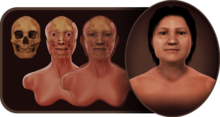
Uruguay, officially the Oriental Republic of Uruguay, is a country in South America. It shares borders with Argentina to its west and southwest and Brazil to its north and northeast, while bordering the Río de la Plata to the south and the Atlantic Ocean to the southeast. It is part of the Southern Cone region of South America. Uruguay covers an area of approximately 176,215 square kilometres (68,037 sq mi) and has a population of around 3.4 million, of whom nearly 2 million live in the metropolitan area of its capital and largest city, Montevideo.

Montevideo is the capital and largest city of Uruguay. According to the 2011 census, the city proper has a population of 1,319,108 in an area of 201 square kilometers (78 sq mi). Montevideo is situated on the southern coast of the country, on the northeastern bank of the Río de la Plata.

Club Nacional de Football is a Uruguayan professional sports club based in Montevideo.
Uruguayan rock first emerged in Uruguay in the 1950s. The real breakthrough for rock in Uruguay, however, as in much of the world, came with the arrival of The Beatles in the early 1960s. Although the country has a small population and is far-removed from the world's cultural centres, rock music from these land, which has always taken on an identity forged from a mix of different cultures and local peculiarities, crossing different genres and styles, has largely been a well-kept secret outside the region. Thanks to the Internet and easy access to music libraries through streaming services such as Spotify, this is now changing.

The Alano Español or Spanish Bulldog is a Spanish breed of medium to large sized dog of alaunt-bulldog type. It has at various times been used as a war dog, for bullfighting, for the management of cattle, for hunting and as a guard dog.

Forensic facial reconstruction is the process of recreating the face of an individual from their skeletal remains through an amalgamation of artistry, anthropology, osteology, and anatomy. It is easily the most subjective—as well as one of the most controversial—techniques in the field of forensic anthropology. Despite this controversy, facial reconstruction has proved successful frequently enough that research and methodological developments continue to be advanced.

"Magdalenian Girl" or "Magdalenian Woman" is the common name for a human skeleton, dated to the boundary between the Upper Paleolithic and the early Mesolithic, ca. 15,000 to 13,000 years old, in the Magdalenian period. The remains were discovered in 1911 in the Dordogne region of southwestern France in a limestone cave known as the Cap Blanc rock shelter. The find was made when a workman drove a pickaxe into the cliff face in the rock shelter, shattering the skull. It is the most complete Upper Paleolithic skeleton in Northern Europe.

Indigenous peoples in Uruguay or Native Uruguayans, are the peoples who have historically lived in the modern state of Uruguay. Because of colonial practices, disease and active exclusion, only a very small share of the population is aware of the country's indigenous history or has known indigenous ancestry.

Cícero Moraes is a Brazilian 3D designer, whose work in open source programs like InVesalius, Blender and MakeHuman has become a reference in the field of forensic facial reconstruction in his country.
Giovanni Alessandro González Apud is a Uruguayan professional footballer who plays as a defender for La Liga club Mallorca and the Uruguay national team. Mainly a right-back, González can also play as a centre-back.

Ana Micaela Monterroso de Lavalleja was a Uruguayan woman, the wife of Juan Antonio Lavalleja, who traveled with him and participated in the politics of the world around her. Whether or not Lavalleja was present in the household, Monterroso ran the family's affairs and would actively aid the resistance to the Portuguese and the government of Fructuoso Rivera. She and Lavalleja had ten children, some of whom died young. She, along with Melchora Cuenca and Cayetana Leguizamón, represent the involvement of women in the early history of modern Uruguay.

Erika Büsch Guadalupe is a Uruguayan popular music composer, guitarist, and singer.
Agó Páez is a Uruguayan plastic artist. Her work focuses on mandalas and the philosophy that supports them.

Anhelo Hernández Ríos was a Uruguayan plastic artist and teacher.

María Carolina Birizamberri Rivero is a Uruguayan footballer and futsal player who plays as a forward for Argentine club River Plate and the Uruguay women's national team.

María Emilia Islas Gatti was a Uruguayan political activist and anarchist, who disappeared in Buenos Aires in 1976.
Joaquín Gabriel Trasante Hernández is a Uruguayan professional footballer who plays as a midfielder for Miramar Misiones.

Gloria Rudi Rodríguez Santo is a Uruguayan journalist, civil servant, activist and politician of the National Party (PN), serving as Senator of the Republic since 15 February 2020. The first Afro-Uruguayan woman to hold a senatorial seat, she is fourth in the line of presidential succession.

The Museum of Pre-Columbian and Indigenous Art is an ethnographic museum located in Ciudad Vieja, Montevideo, Uruguay, dedicated to the indigenous cultures of different parts of Latin America.
The 2022 Liga Profesional de Primera División season, also known as the Campeonato Uruguayo de Primera División 2022, was the 119th season of the Uruguayan Primera División, Uruguay's top-flight football league, and the 92nd in which it is professional. The season, which was named "Walter Devoto", began on 5 February and ended on 30 October 2022 due to the 2022 FIFA World Cup to be held in Qatar during November and December 2022.















